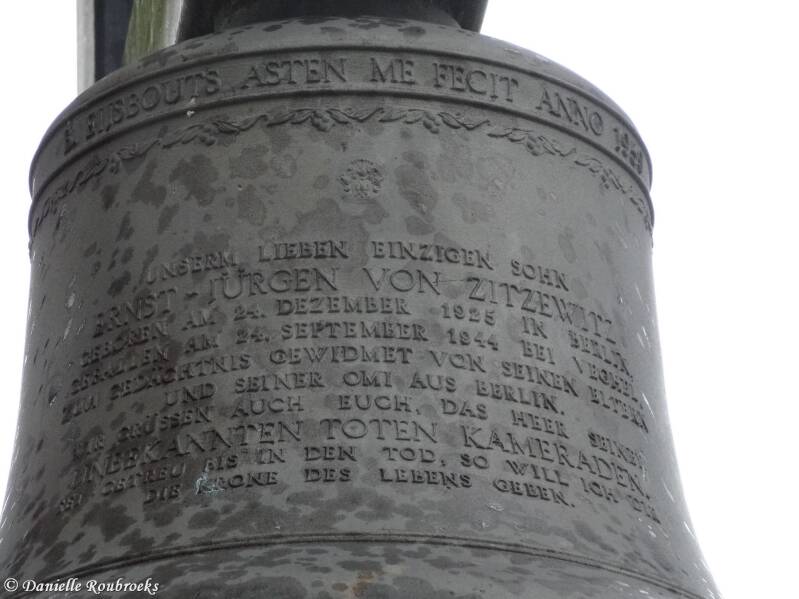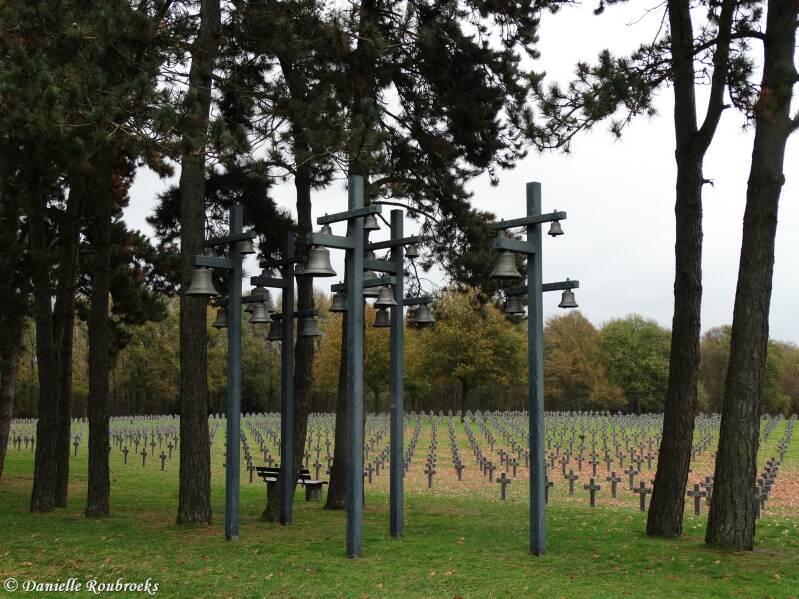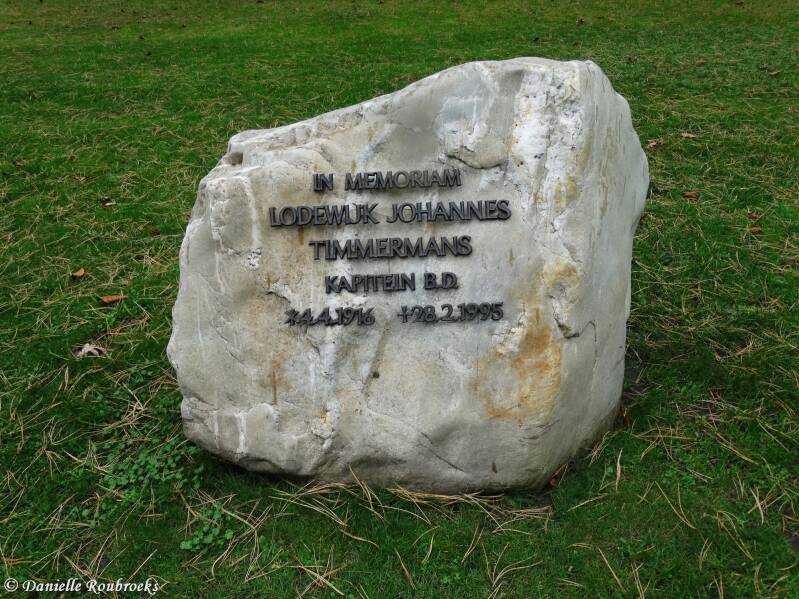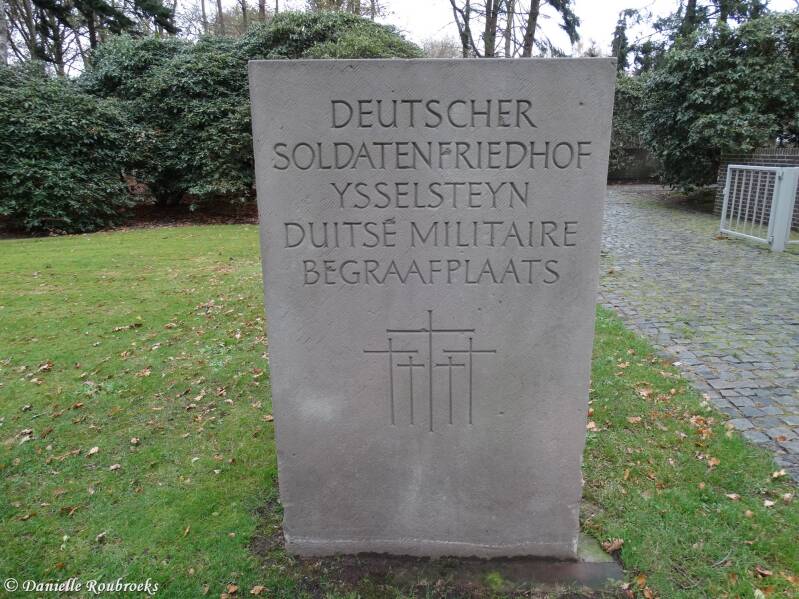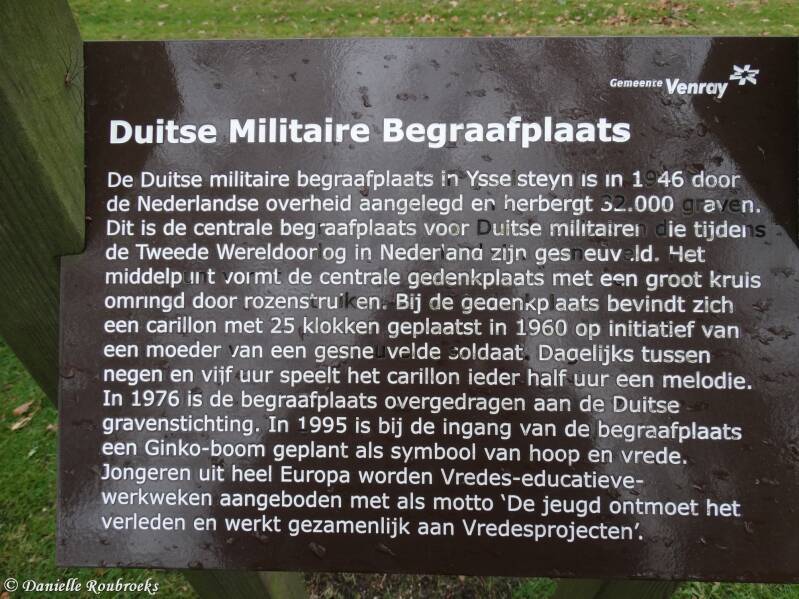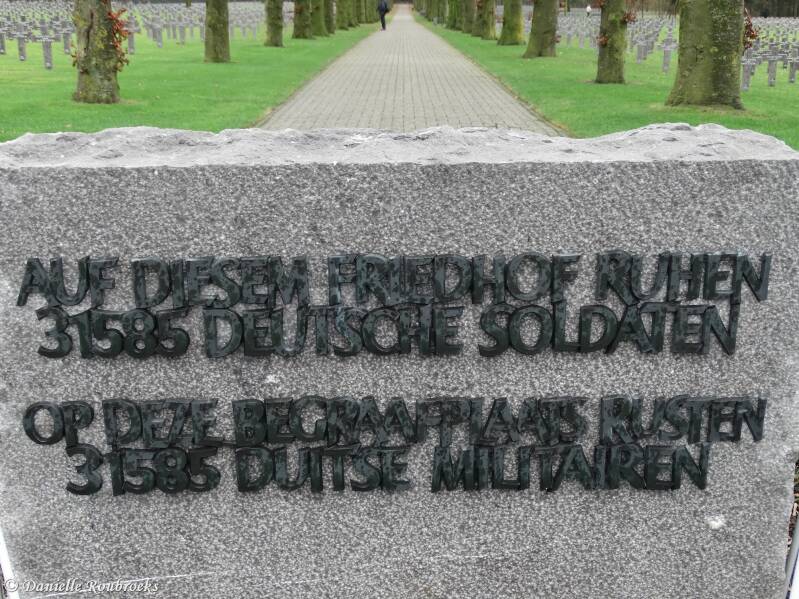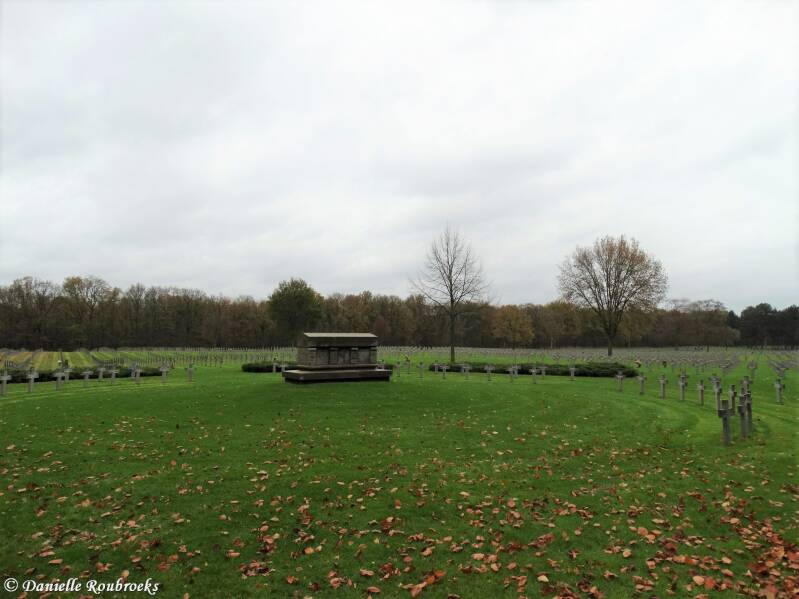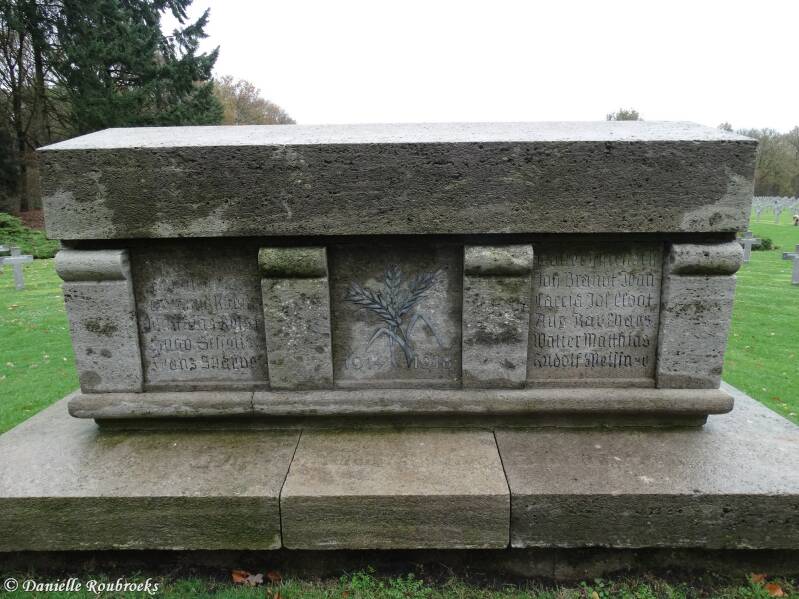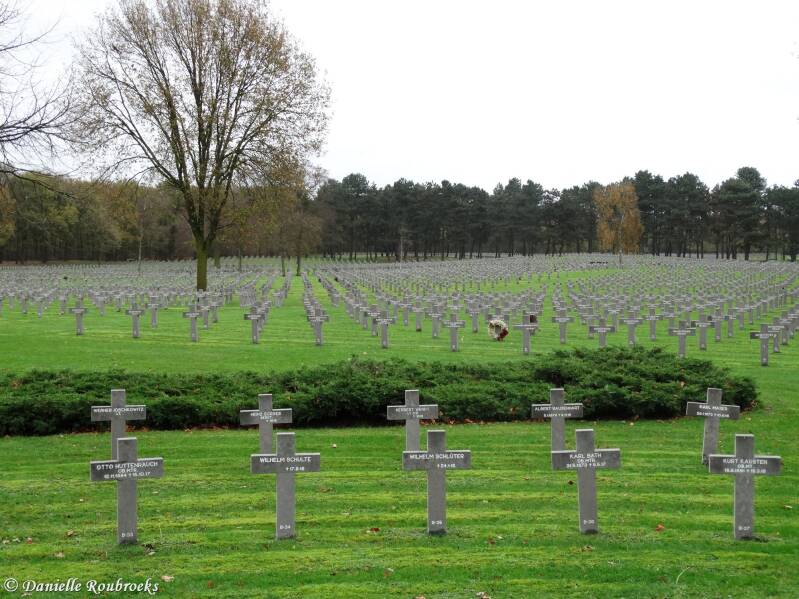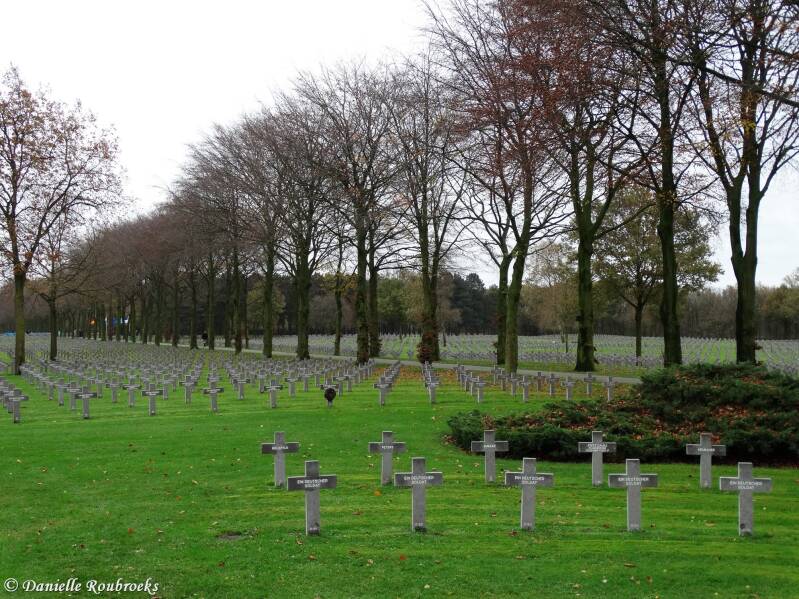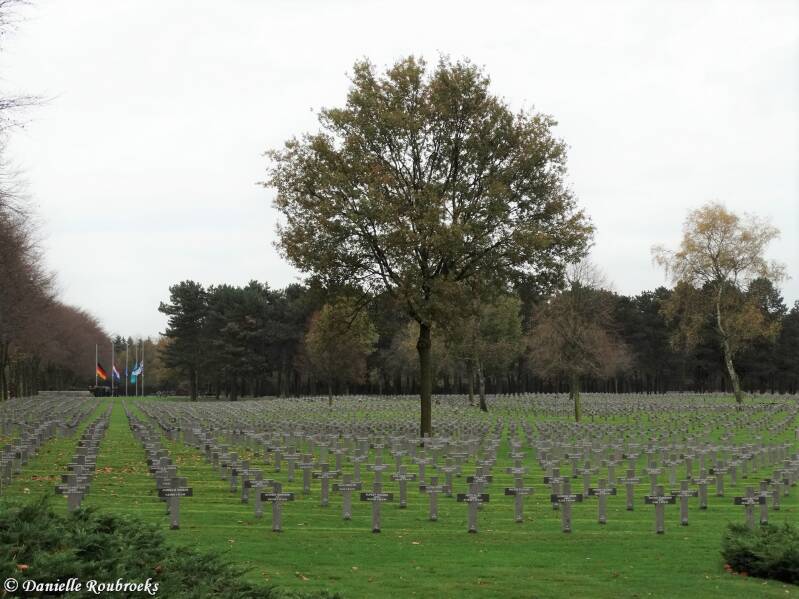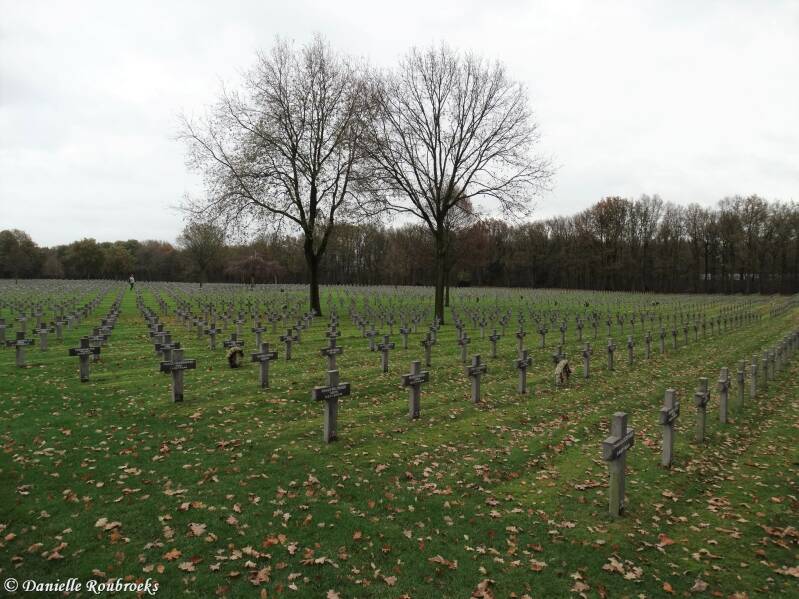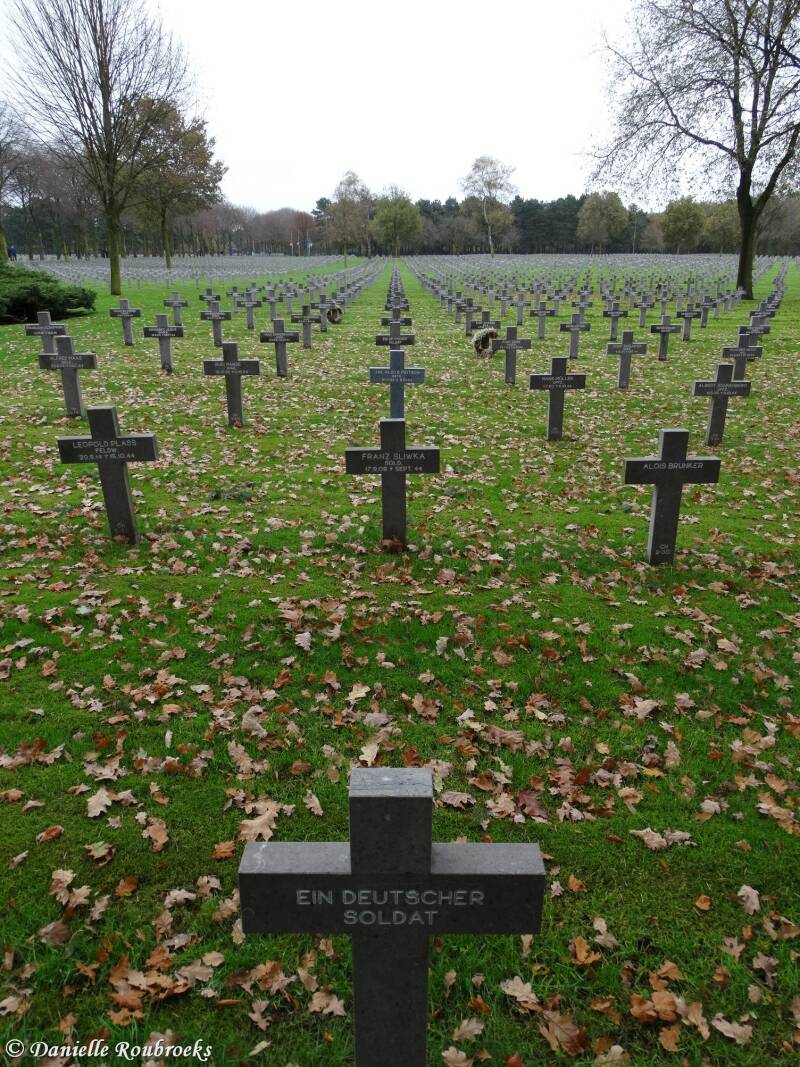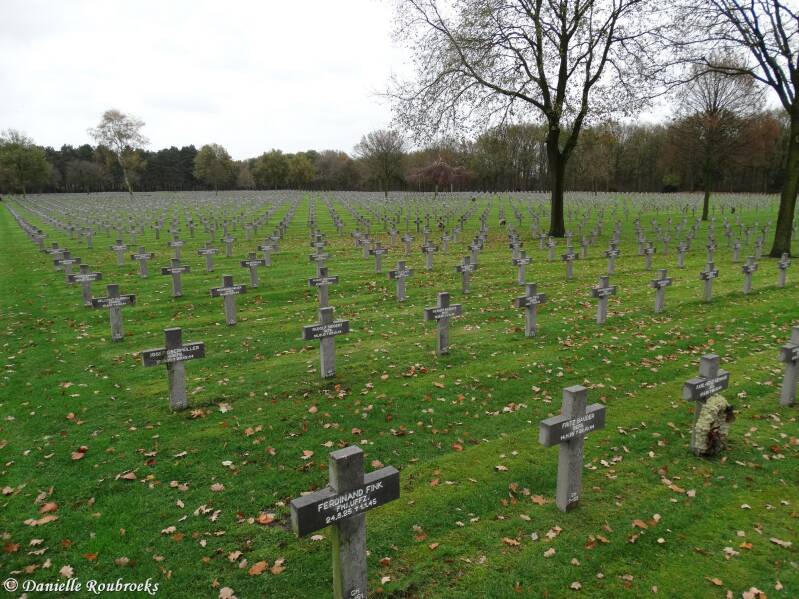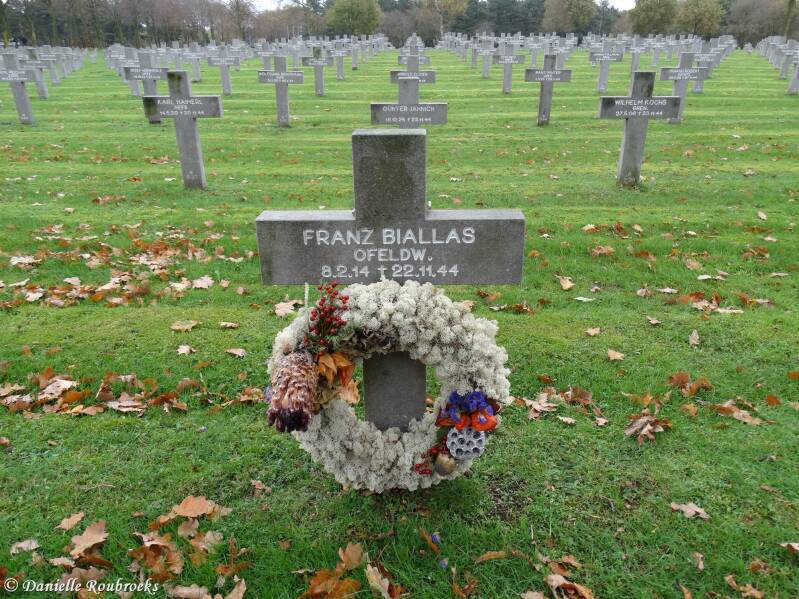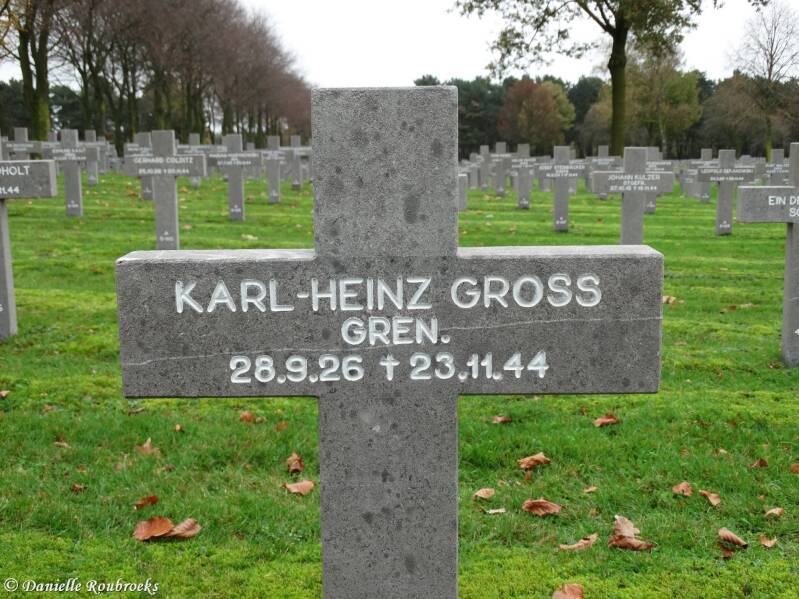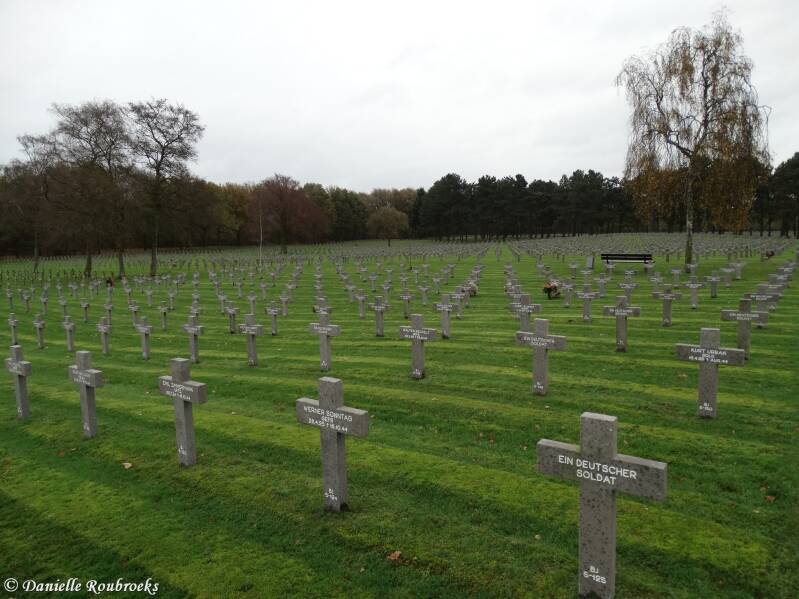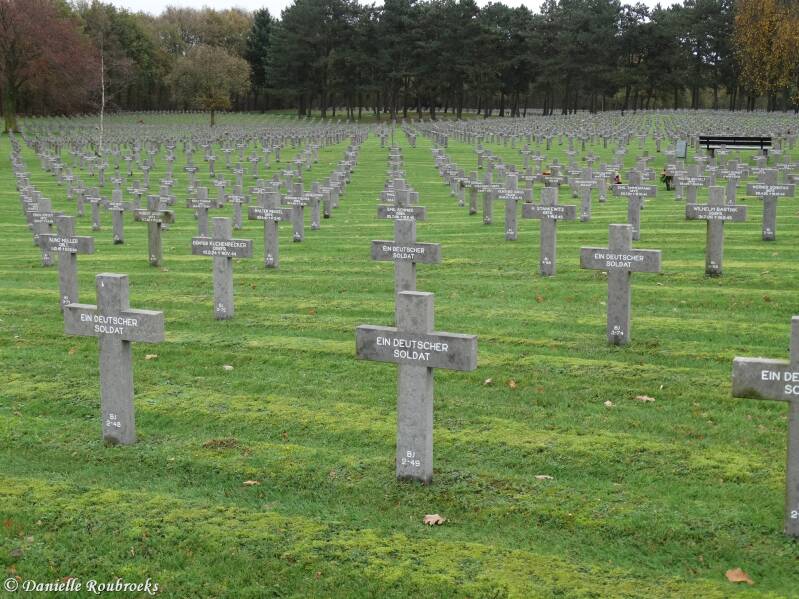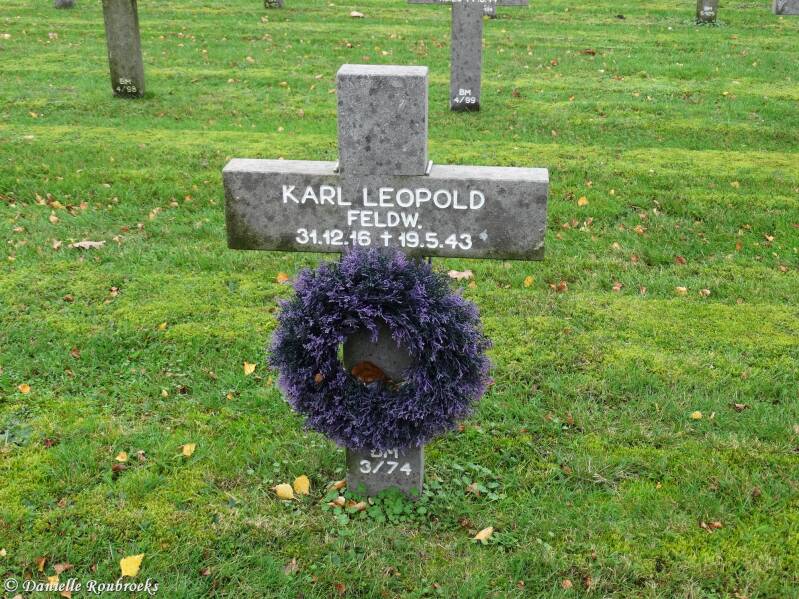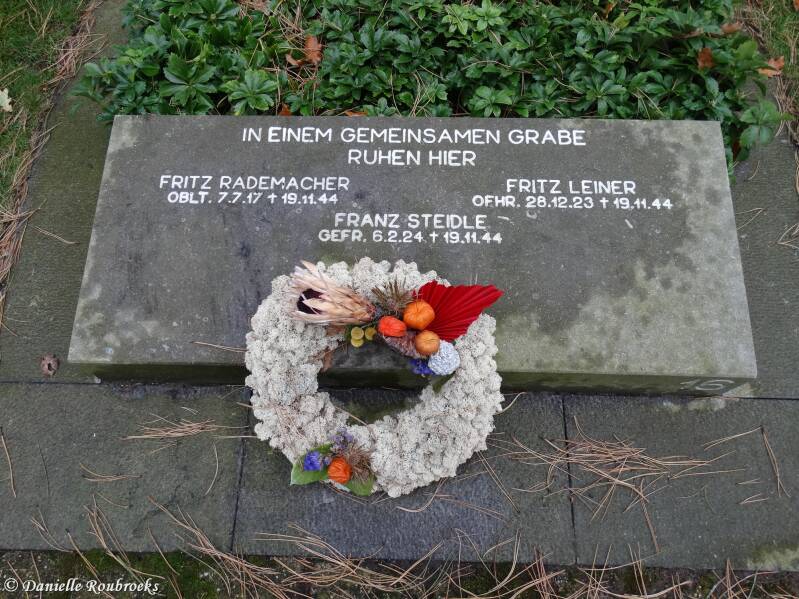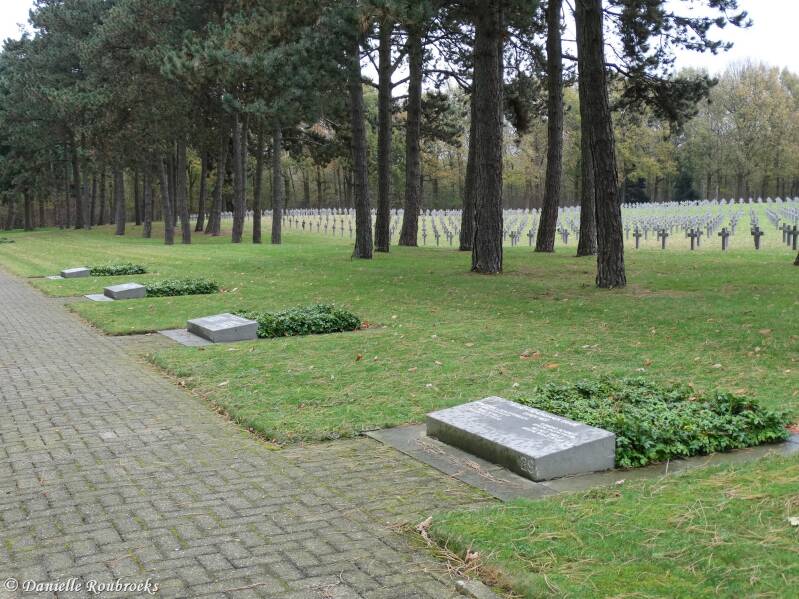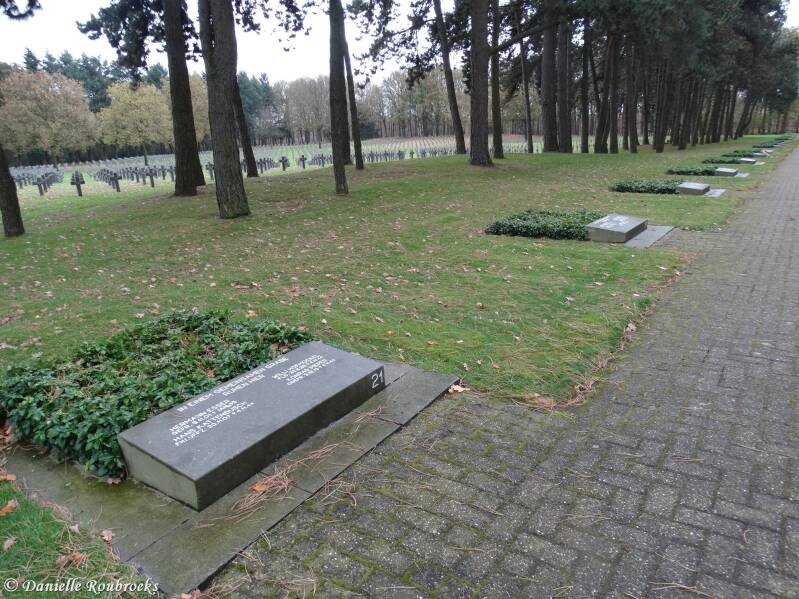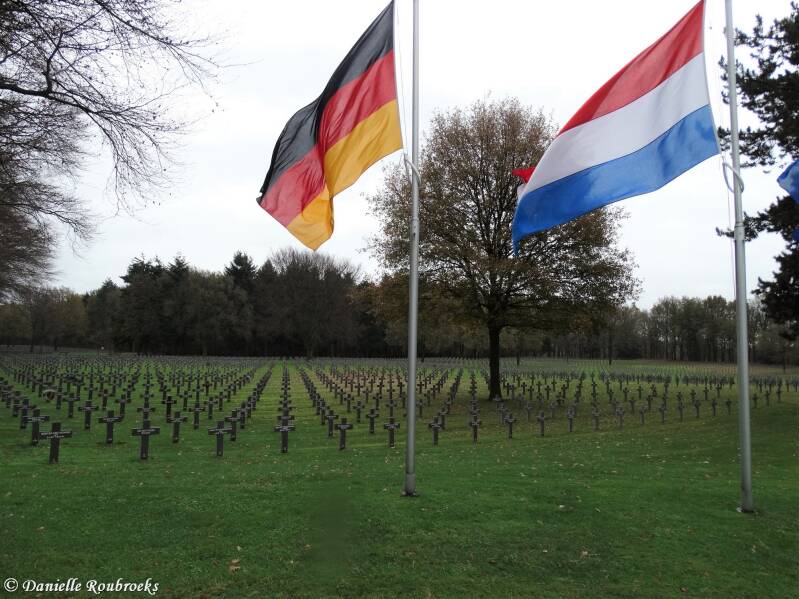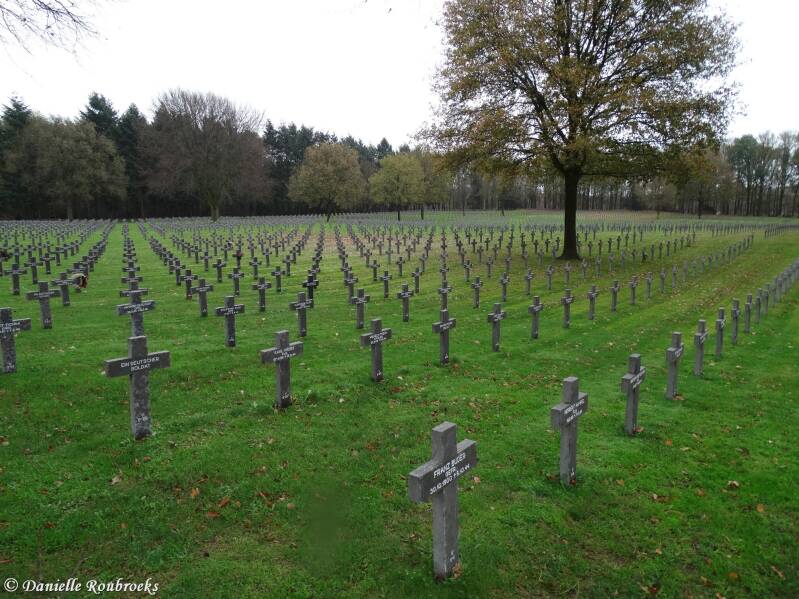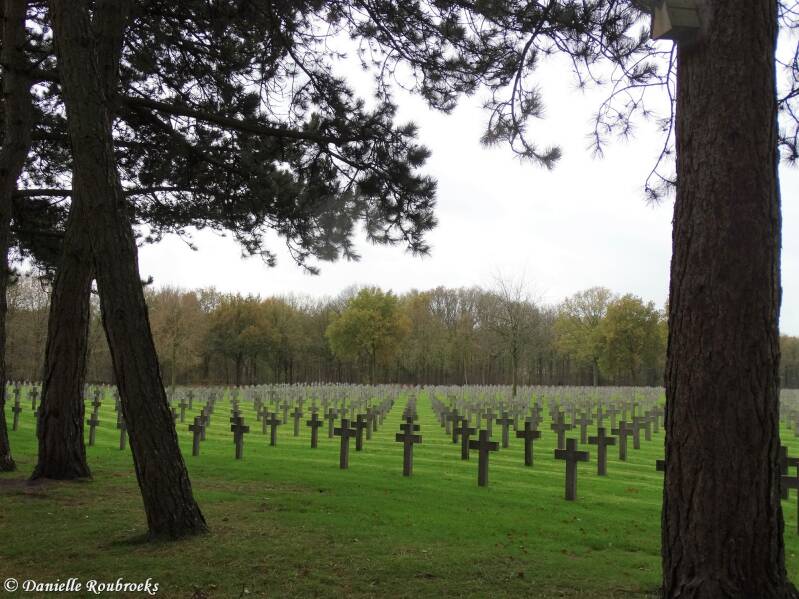Ysselsteyn Kriegsgräberstätte - German War Cemetery
Historical Information (Voksbund - Wikipedia)
There are 31,813 burials.
At 28 hectares, the complex is the largest German war cemetery in the world. The cemetery is divided into 116 blocks with mostly twelve rows of 25 graves each. Almost all of the fallen rest in individual graves.
All German soldiers of the Second World War who fell on Dutch territory are buried in the cemetery. Dutch, Polish and Russian soldiers who fought in German uniforms are also buried here, as well as 87 soldiers who died in World War I. About 3,000 German soldiers have been reburied from near Maastricht to Ysselsteyn. They had fallen in the last months of the war in the Huertgen Forest or during the Ardennes offensive. Ysselsteyn also contains 1,700 German soldiers who died in the Arnhem area, as well as 475 German and Georgian soldiers from the island of Texel who died in the "Georgian Uprising". Men, women and children from the internment camp in Vught also found their resting place in Ysselsteyn.
Close to the comrades graves is a four meter high carillon.
The carillon was inaugurated on September 4, 1960 by the Consul of the Federal Republic of Germany, Dr. K. Buddenberg. This carillon was placed on the initiative of Mrs Von Zitzewitz. She is the mother of a fallen soldier and visited the cemetery every year. In 1959, she donated the largest bell of the carillon in memory of her son and all other fallen German soldiers. In addition, she requested many governments and city councils to make a donation, so that the carillon consists of 25 bells. Every day between nine and five o'clock the carillon plays a melody every half hour.
Captain L.J. Timmermans was a Dutch soldier in World War II and had fought against the Germans as a voluntary conscript at the beginning of the war. After the liberation of the southern Netherlands, he rejoined the army, but was injured while searching for mines near Alphen in Brabant. In the military hospital he lay next to other wounded Allied soldiers, but also German prisoners of war and befriended one of the Germans. That friendship became so close that after the war he committed himself to the realization of this military cemetery and thus also became its first administrator.
Timmermans died in 1995 and according to his wishes his ashes have been scattered here on the German War Cemetery. There is a memorial stone to him in the center of the cemetery.






